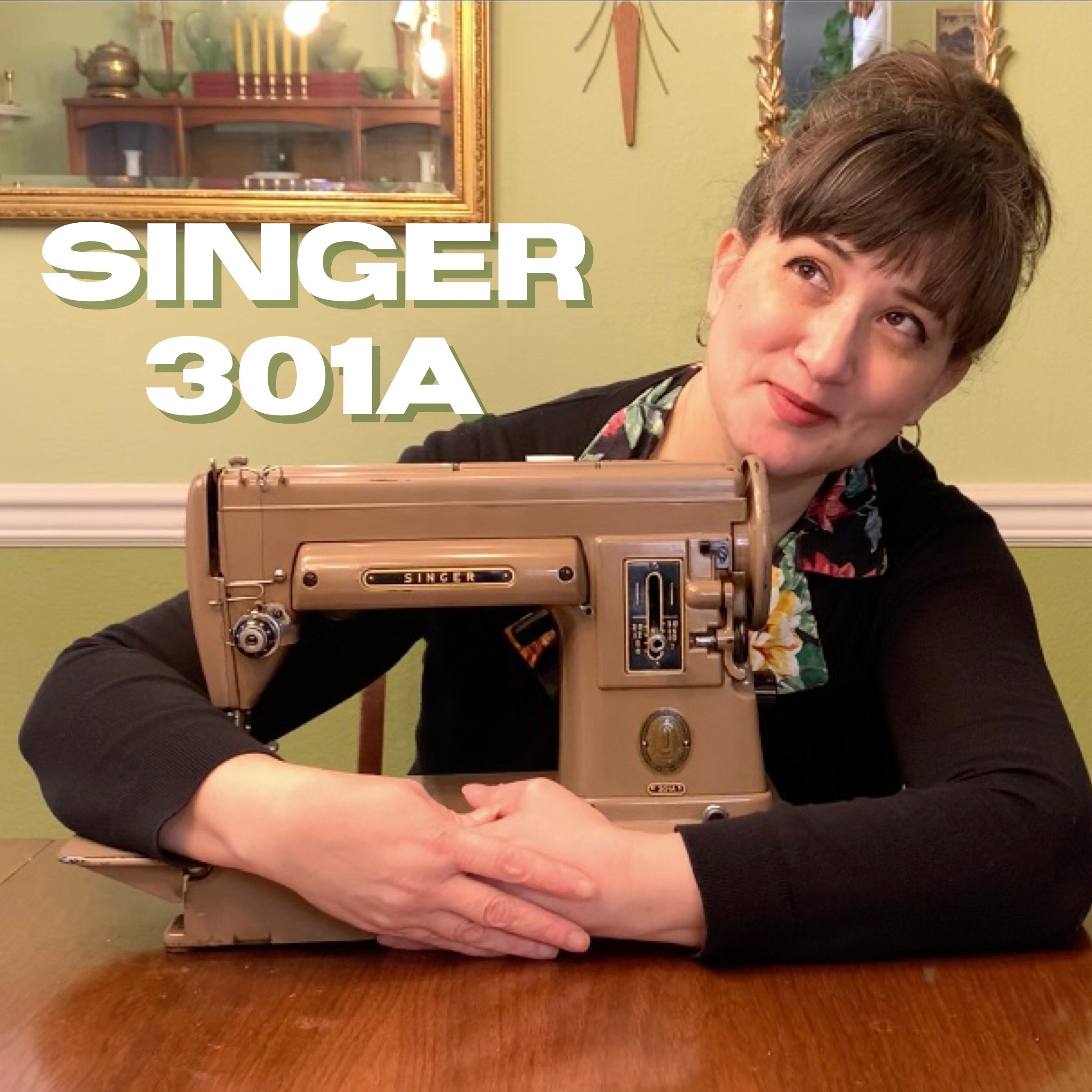Not too long ago I fell in love with a 1954 Singer 301A that I picked up at my local Goodwill. I have a YouTube video all about here: (Click)
We became best friends and I took a deep dive into this model of Singer machines. I recently admitted to being a Pfaff girl. I just love all of my Pfaff machines, I’ve owned one my entire adult life and I often prefer to sew on them over my Singers. The 301A made me change my mind on that.
The stitching that the 301 produces is incredibly fine and dare I say perfect. That slant shank, boy howdy it whispers sweet nothings to my sewing mojo. Don’t get me started on my baby steps in my free motion sewing, that the 301 entices me with its drop feed capability. With all that said my personal deep dive led me to read the history of the machine and all the wonderful things about this model. You can too via www.Singer301.com.
I read up on the different color ways, bed lengths and special editions. I instantly fell for the black long bed version. Of course I want to collect all versions, but I was smitten with that black long bed. After using the 301A for a while now, I could see how having a bit longer bed would be handy. I started poking around online to see if I could price one out. I ended up finding this 1952 Grand Introduction model.








